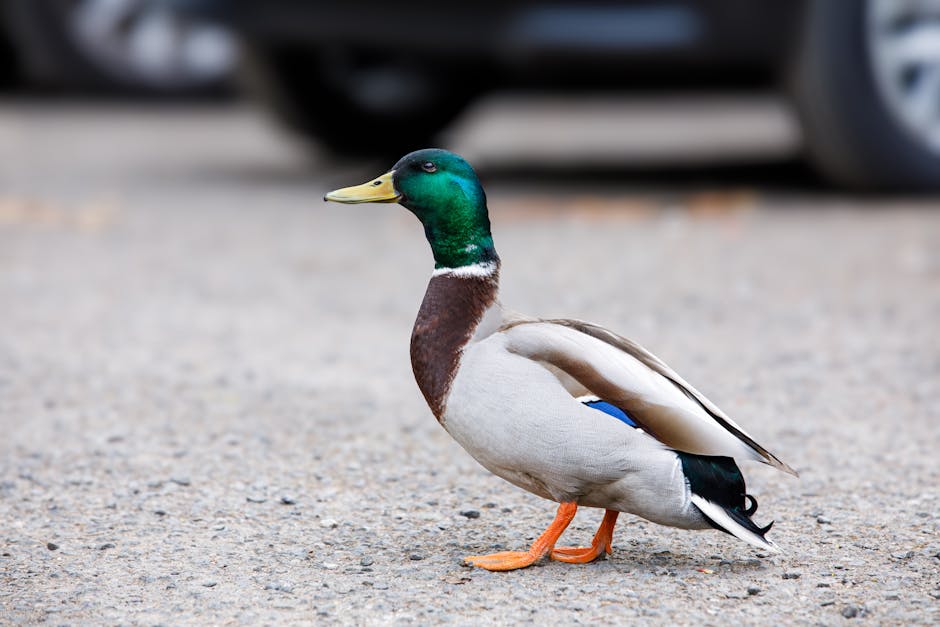Eco-Engineering Your Home: Embrace Biomimicry for Sustainability
Imagine walking into your home, a sanctuary that reflects the beauty and efficiency of nature itself. What if the walls echoed the resilience of trees, the roof was inspired by the intricate design of beehives, and your appliances mimicked the energy efficiency of an ecosystem? In a time when sustainable living has transformed from a trend into an urgent necessity, eco-engineering through biomimicry presents an innovative solution that empowers homeowners to draw upon nature’s wisdom.
Biomimicry, a concept rooted in observing and emulating nature’s time-tested patterns and strategies, invites us to look beyond traditional methods of construction and design. By examining how organisms adapt and thrive, we can implement features that not only enhance our living environment but also promote energy efficiency, reduce waste, and foster healthier lifestyles. In this comprehensive exploration of biomimicry in home design, we’ll unlock the secrets to aligning your living spaces with nature, creating havens that are not only functional but also contribute positively to our planet.
What is Biomimicry and Why Does it Matter?
Biomimicry is more than a mere design philosophy; it’s a mindset that can radically change how we approach sustainability. The concept, popularized by Janine Benyus in her 1997 book, centers around the idea that nature has already solved many of the problems we face today. From the way animals construct their homes to the efficient energy consumption of natural systems, the blueprints for a sustainable future exist all around us.
As climate change escalates and urbanization expands, the relationship we have with our homes and environments needs a fundamental reevaluation. Adopting biomimetic design principles not only minimizes our ecological footprint but also enhances our connection to the natural world. This approach encourages us to foster environments that echo the Earth’s inherent wisdom, blending modern engineering with organic design.
Principles and Applications of Biomimicry at Home
Implementing biomimicry in your home design goes beyond mere aesthetics; it involves harnessing nature's principles for practical, eco-friendly solutions. Here are some key principles drawn from nature that can be creatively applied to your living spaces:
Efficient Energy Use Inspired by Termite Mounds

One of the most fascinating examples of nature’s ingenuity comes from the humble termite mound. These structures maintain constant internal temperatures despite fluctuating external conditions. Homeowners can draw from this by implementing thermal mass techniques, which utilize materials like concrete or stone to absorb heat during the day and release it at night, thereby reducing the need for excessive heating and cooling.
DIY Project: Consider creating a small indoor thermal mass feature—like a thermal bench in your south-facing window. During the day, this bench can absorb sunlight, keeping your home warmer without the need for traditional heating.
Water Conservation through Mimicking Nanostructures

The Namib Desert beetle expertly captures moisture from fog using its uniquely structured shell. By adopting similar designs, homeowners can implement water-harvesting roofs equipped with micro-structures that channel rainwater into storage systems more effectively than traditional designs.
DIY Project: Create a rooftop garden equipped with a rainwater collection system that direct moisture into your plants, imitating the beetle's water collection method while simultaneously nourishing your garden.
Biophilic Design: Integrating Nature into Your Home

Biophilic design is about creating connections with nature, which can greatly enhance well-being and productivity. Inspired by natural forms and processes, biophilic architecture engages our senses and instills a sense of tranquility.
For a biophilic touch, consider adding indoor plant walls, natural lighting through strategically placed windows, or earth-tone paints that replicate the natural colors found in forests.
Sustainable Innovation: Energy Usage Inspired by Photosynthesis

Nature’s strategy for energy generation, especially through photosynthesis in plants, can be mirrored at home using solar technology. Including smart solar panels designed to replicate the efficiency of leafy greens can dramatically reduce energy consumption.
DIY Project: Invest in solar panels and educate yourself on how to integrate them into your home. Many solar systems can now work synergistically with your home automation systems to maximize their efficiency.
Zero-Waste Systems Inspired by Nature’s Circular Economy

In nature, waste is merely a resource waiting to be reused. Humans can replicate this model in our living spaces by designing for zero waste. One way to do this is by setting up a composting system that transforms kitchen scraps into nutrient-rich soil, echoing the natural composting cycle.
DIY Project: Start a worm composting bin in your kitchen to convert waste into valuable compost while educating your family about sustainable waste practices.
Transforming Spaces with Biomimicry: Real-Life Applications

Let’s take a look at some real-world examples where biomimicry has been successfully integrated into homes, enhancing both functionality and sustainability.
The Eden Project: A Testament to Biomimetic Design

Located in Cornwall, England, the Eden Project showcases different biomes that mimic various eco-systems. The design principles used in creating the biomes, such as adapting to their environment while promoting biodiversity, serve as a model for residential design.
By understanding how such eco-centers utilize renewable materials, we can learn to integrate similar principles at home—like employing local, natural materials in our construction projects or fostering biodiversity in our gardens.
The Bosco Verticale: Vertical Forests in Urban Spaces

Milan’s Bosco Verticale project illustrates an innovative approach to urban architecture by integrating vertical gardens into high-rise buildings. This design not only significantly improves air quality but also contributes to thermal insulation and energy conservation.
Homeowners can adopt this model by installing vertical gardens on their balconies or using climbing plants on exterior walls to create homes that breathe with the environment.
How to Start Your Journey to Biomimetic Living

Although it might seem daunting to overhaul your entire home to align with biomimetic principles, you can begin with small, impactful changes. Here are some steps to help you kickstart your eco-engineering project:
1. Educate Yourself

Understanding the principles of biomimicry is the first step in your journey. Resources like Janine Benyus's books or online courses focused on sustainable design can empower you with valuable knowledge.
2. Assess Your Space

Conduct a thorough assessment of your home to identify areas where biomimetic solutions could be applied. This could be anything from energy efficiency to water usage or even interior decor.
3. Start Small

Begin with manageable projects, like installing rainwater collection systems or biophilic elements, and gradually work towards larger initiatives, such as solar energy integration or eco-friendly renovations.
4. Engage with Nature

Spend time outdoors, observing natural systems and ecosystems. This will inspire you to implement innovative, adaptive designs in your own space, echoing the harmony found in nature.
Final Thoughts: Crafting a Sustainable Future Through Biomimicry
Embracing biomimicry not only provides us with unique design inspirations but also reinforces our responsibilities as caretakers of our environment. By observing and drawing lessons from the natural world, we can evolve the way we live, creating homes that are not only beautiful and functional but also serve the planet instead of degrading it. As you embark on this journey, remember that sustainable living is a collaborative effort. Share your experiences with neighbors, inspire your community, and together, let’s redefine how we view our homes in relation to the earth that nurtures us.
For more insights on sustainable living, consider exploring how you can embrace vintage energy for eco-friendly living or learn about eco-mindfulness practices that deepen your connection with nature.





